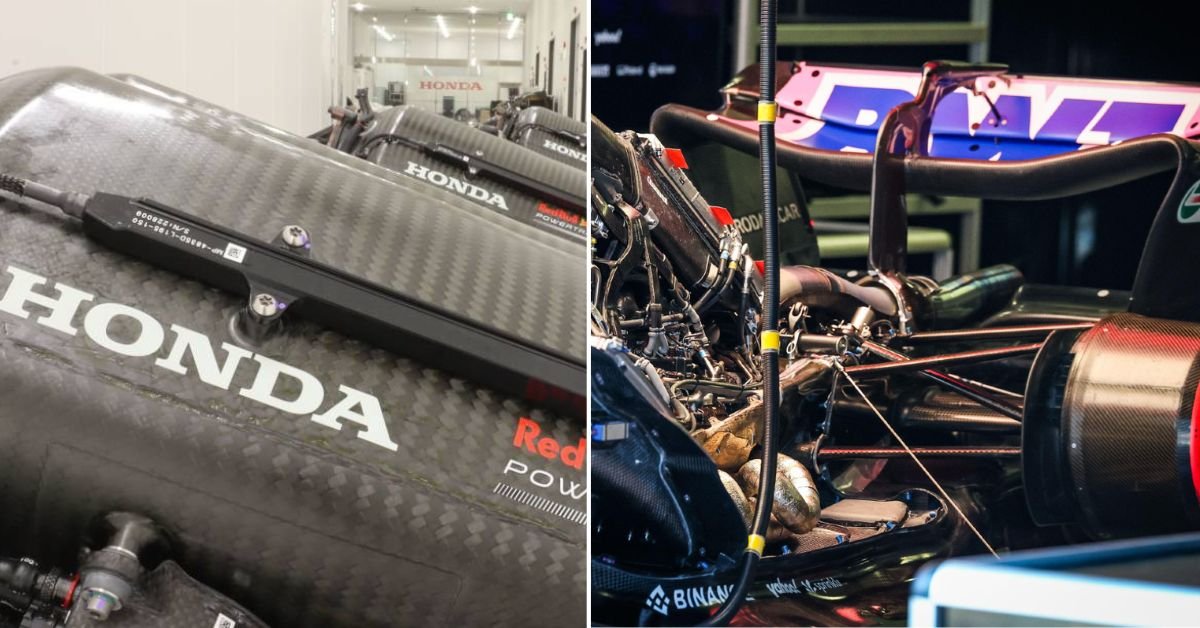A good F1 engine will help propel a team to the top. They are vital for doing well at ‘power tracks’ like Monza, Canada and Baku. The engine is considered one of the most important components. It creates the power needed for the top speeds. A powerful engine will help a driver overtaker.
Four manufacturers are currently creating the engine for the ten teams in the field before the regulation changes in 2026. Which teams power the rest of the field?
Who are the four F1 engine manufacturers?
Four teams build and develop the engines: Mercedes, Ferrari, Honda, and Renault. Constructors champions McLaren have used a Mercedes powertrain since the 2021 season. Mercedes also powers the Aston Martin F1 engine since 2021 and Williams’s since 2014.
Haas and Sauber use the Ferrari powertrain. However, after the 2025 season, Audi will power Sauber. Renault only supplies an engine to one team, Alpine. However, they will drop off the grid as Mercedes will take on the mantle from 2026.
Honda power from 2019! The Team to race with @HondaRacingF1 power units from next season 👉 https://t.co/bIDM1SOimf pic.twitter.com/KVZPDIeNoL
— Oracle Red Bull Racing (@redbullracing) June 19, 2018
Red Bull and Racing Bulls currently use an engine powered by a collaboration of Honda and Red Bull Power Trains. This collaboration will run until the end of the 2025 season when Honda will join forces with Aston Martin. Red Bull Power Train will team up with Ford for the 2026 season.
| Mercedes | Ferrari | Honda | Renault |
| Aston Martin | Ferrari | Racing Bulls | Alpine |
| McLaren | Haas | Red Bull Racing | |
| Mercedes | Sauber | ||
| Williams |
How does the current F1 engine work?
The current engine used by F1 teams is the 1.6 litre V6 turbocharged engine. These engines were introduced in the 2014 season and are a hybrid power unit which combines electric motors with internal combustion. They were introduced to make the cars more fuel efficient. The current engines can create around 900 horsepower. This is higher than their predecessors, the 2.4-liter V8 engines, which created between 750-800 horsepower.
“𝗪𝗵𝗮𝘁 𝗙𝟭 𝗵𝗮𝘀 𝗮𝗰𝗵𝗶𝗲𝘃𝗲𝗱 𝘀𝗶𝗻𝗰𝗲 𝘁𝗵𝗲 𝘀𝘁𝗮𝗿𝘁 𝗼𝗳 𝘁𝗵𝗲 𝗵𝘆𝗯𝗿𝗶𝗱 𝗲𝗻𝗴𝗶𝗻𝗲𝘀 𝗶𝗻 𝟮𝟬𝟭𝟰, 𝗵𝗮𝘀 𝗯𝗲𝗲𝗻 𝗻𝗼𝘁𝗵𝗶𝗻𝗴 𝘀𝗵𝗼𝗿𝘁 𝗼𝗳 𝗿𝗲𝗺𝗮𝗿𝗸𝗮𝗯𝗹𝗲.”@MercedesAMGF1‘s Hywel Thomas explains how the hybrid engines operate 🛠#SkyF1 | #F1 pic.twitter.com/eV7KasHJIJ
— Sky Sports F1 (@SkySportsF1) July 23, 2021
The 2025 season will see the last use of these specifications of engines. The change of regulations will come in 2026 and make the cars more environmentally sustainable. They will have an even split between the internal combustion and electric elements. This means teams are already trying to develop the new engine to be ahead of the game.












